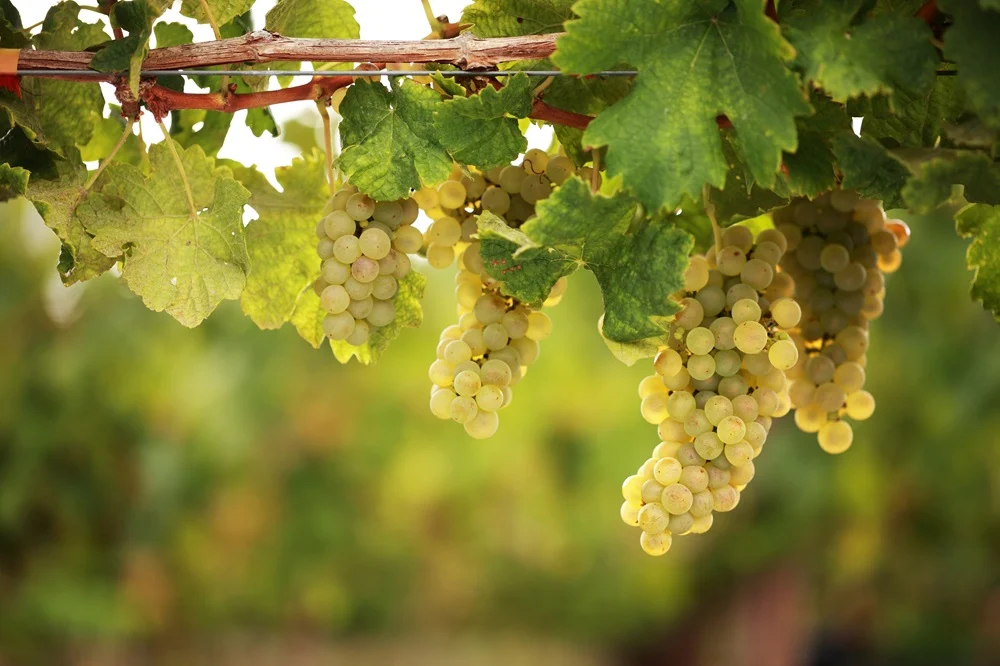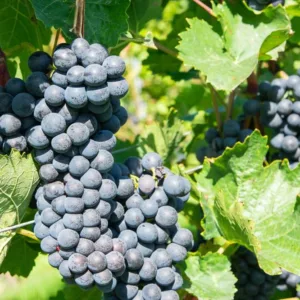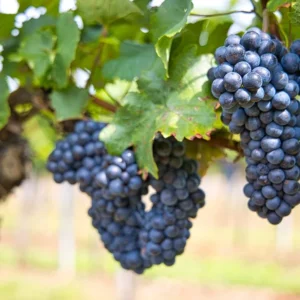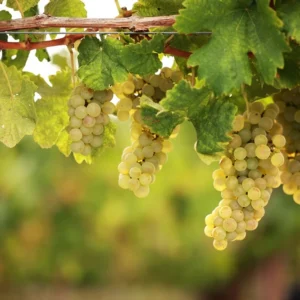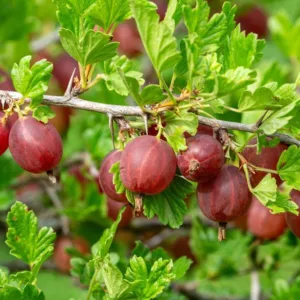Description
White Grapes (Vitis vinifera & hybrids) are a diverse group of grape cultivars known for producing light green to golden-yellow fruit, commonly used for fresh eating, winemaking, juicing, and drying into raisins. These grapes grow on vigorous, woody vines that are both productive and ornamental, with attractive foliage and a trailing or climbing habit.
Most white grape varieties are descended from Vitis vinifera, the European grapevine, although hybrid varieties are also available for improved cold-hardiness or disease resistance. Common cultivars include Niagara, Thompson Seedless, Chardonnay, and Lakemont. Depending on the variety, white grapes can be either seeded or seedless, with flavors ranging from crisp and tart to sweet and aromatic.
White grape vines typically begin producing fruit in their third year, reaching full maturity and peak yields between 5 and 7 years. Clusters of small white flowers appear in late spring, followed by the formation of tightly packed grape clusters in midsummer. Harvest typically occurs between August and October, depending on climate and cultivar.
These vines thrive in USDA zones 5 through 9, though some hybrids are hardy into zone 4. White grapes grow best in full sun and well-drained soil with a neutral to slightly acidic pH. They require regular pruning, trellising, and training to maintain airflow and support fruit production. Proper pruning each winter is essential to control growth and maximize yields.
White grape vines are susceptible to common grape diseases such as powdery mildew and black rot, so good air circulation and preventive care are important. Despite the maintenance, these vines reward growers with abundant harvests and multi-use fruit.
With their mix of productivity and elegance, white grape vines are a staple in home orchards, vineyards, and edible landscapes alike.

